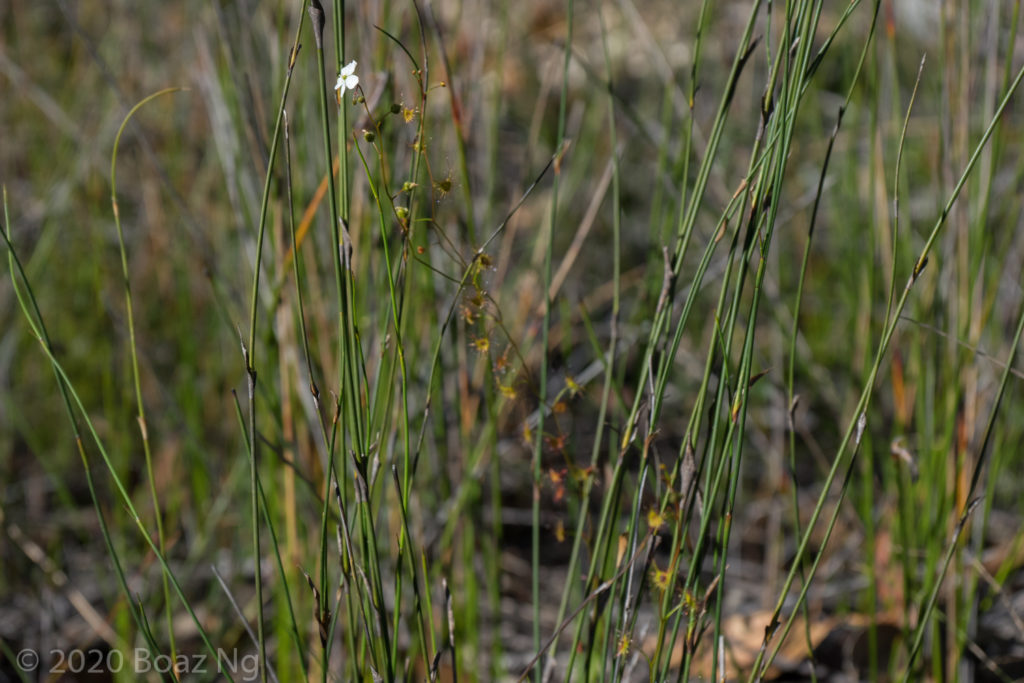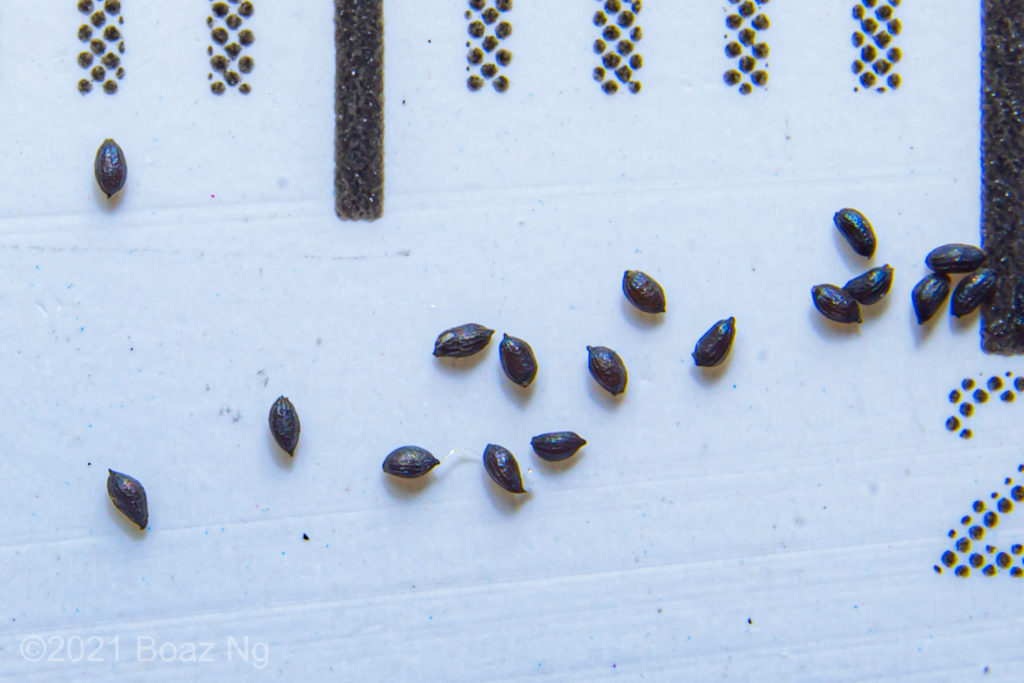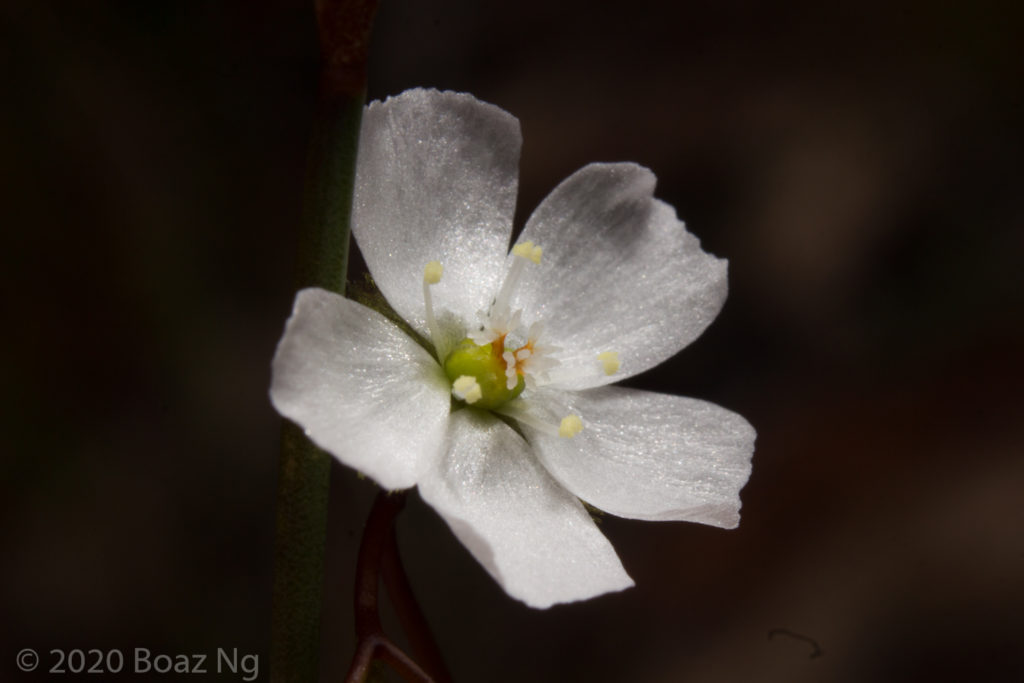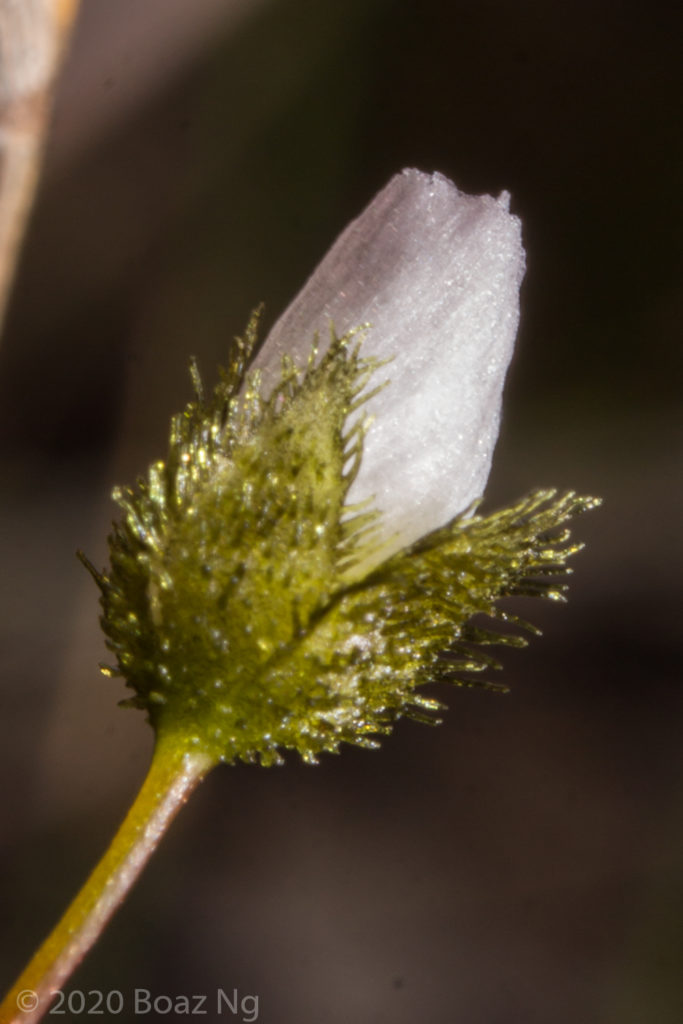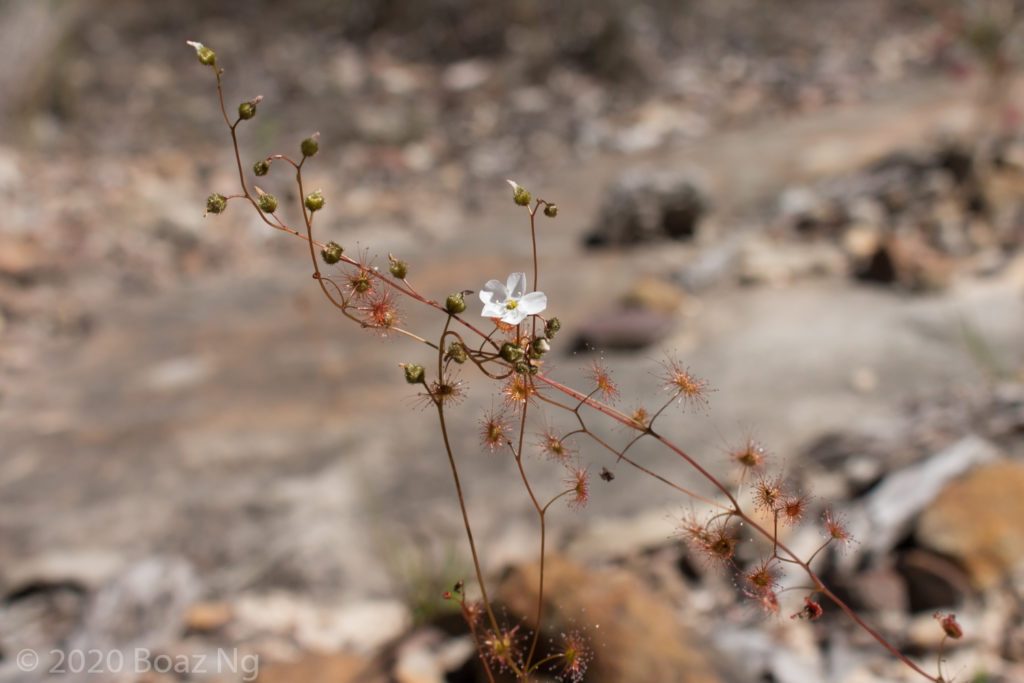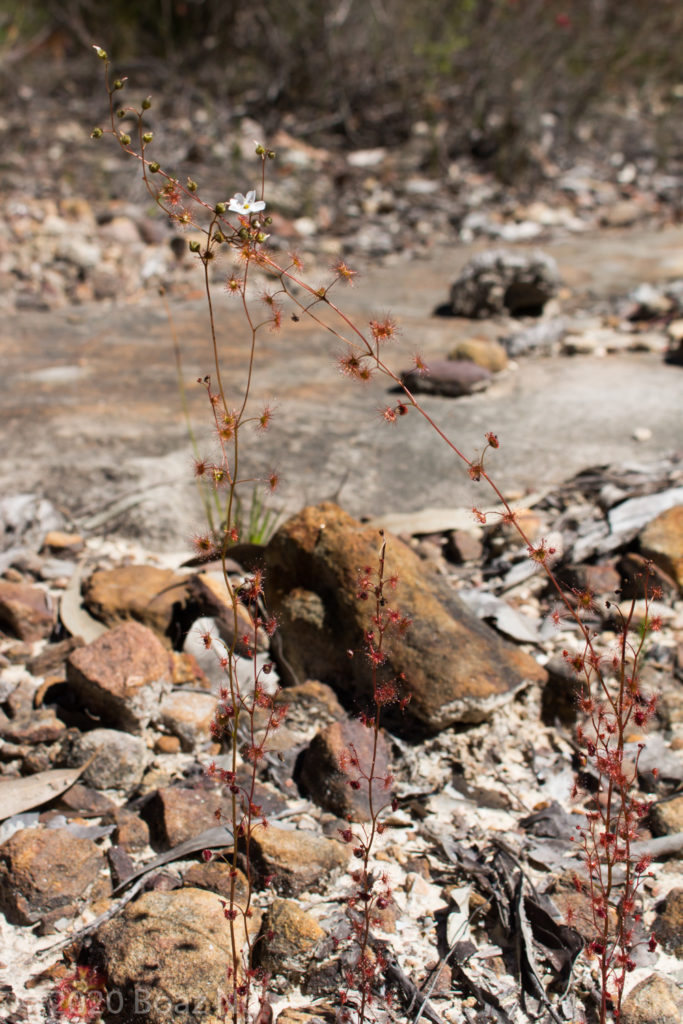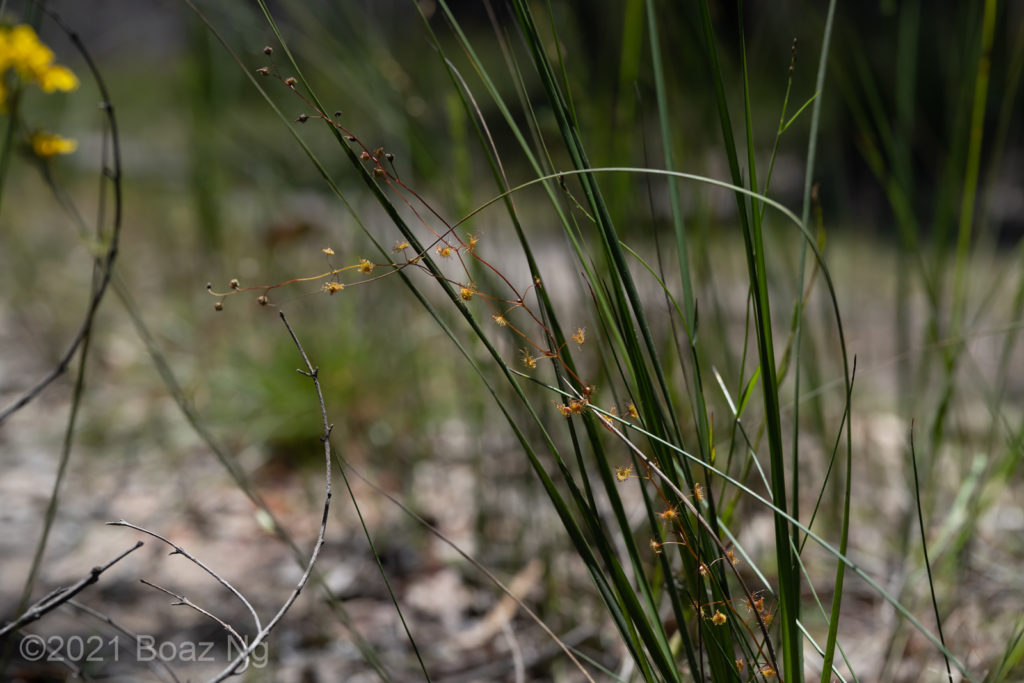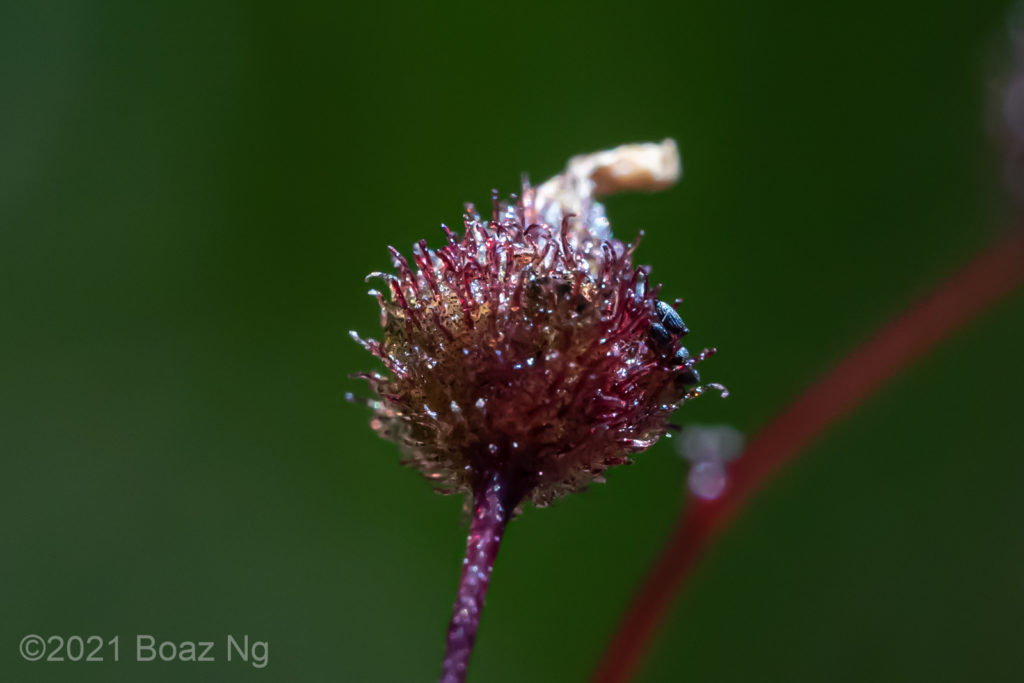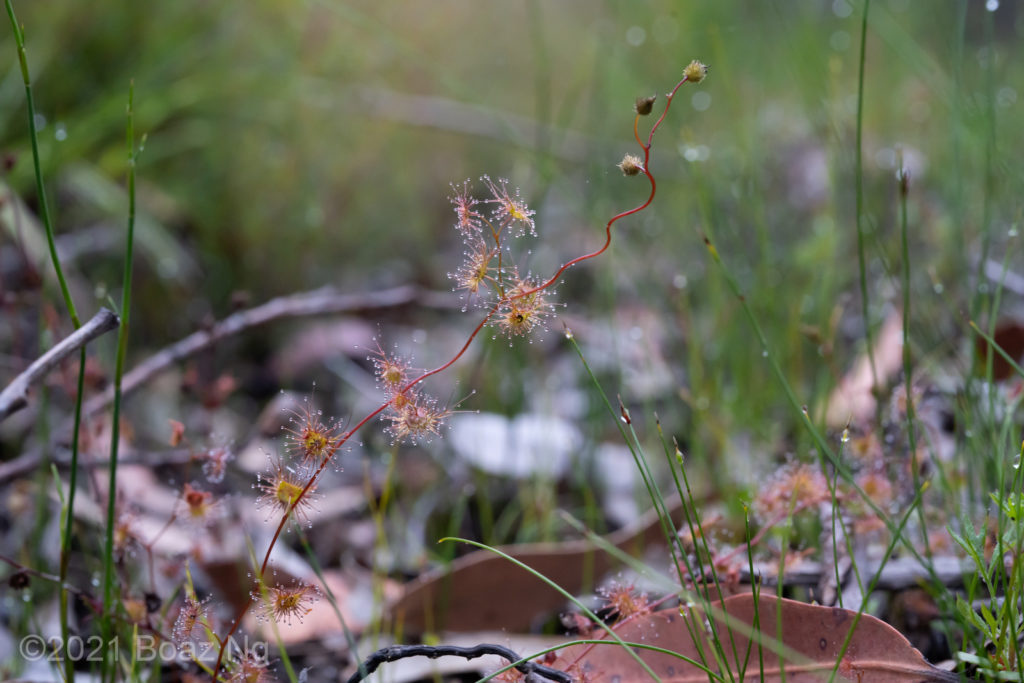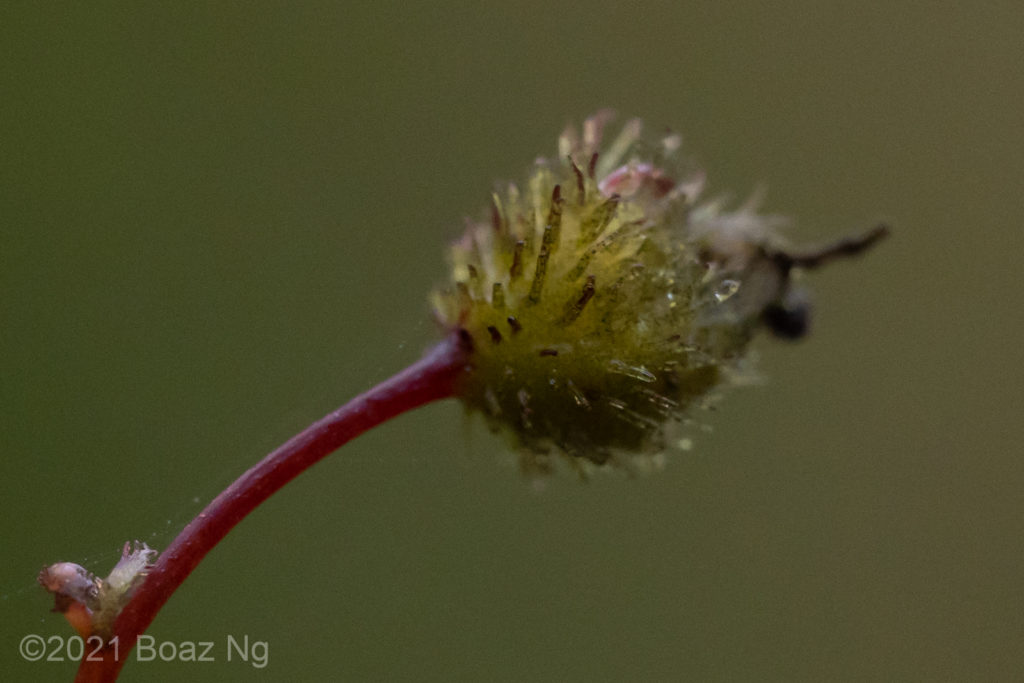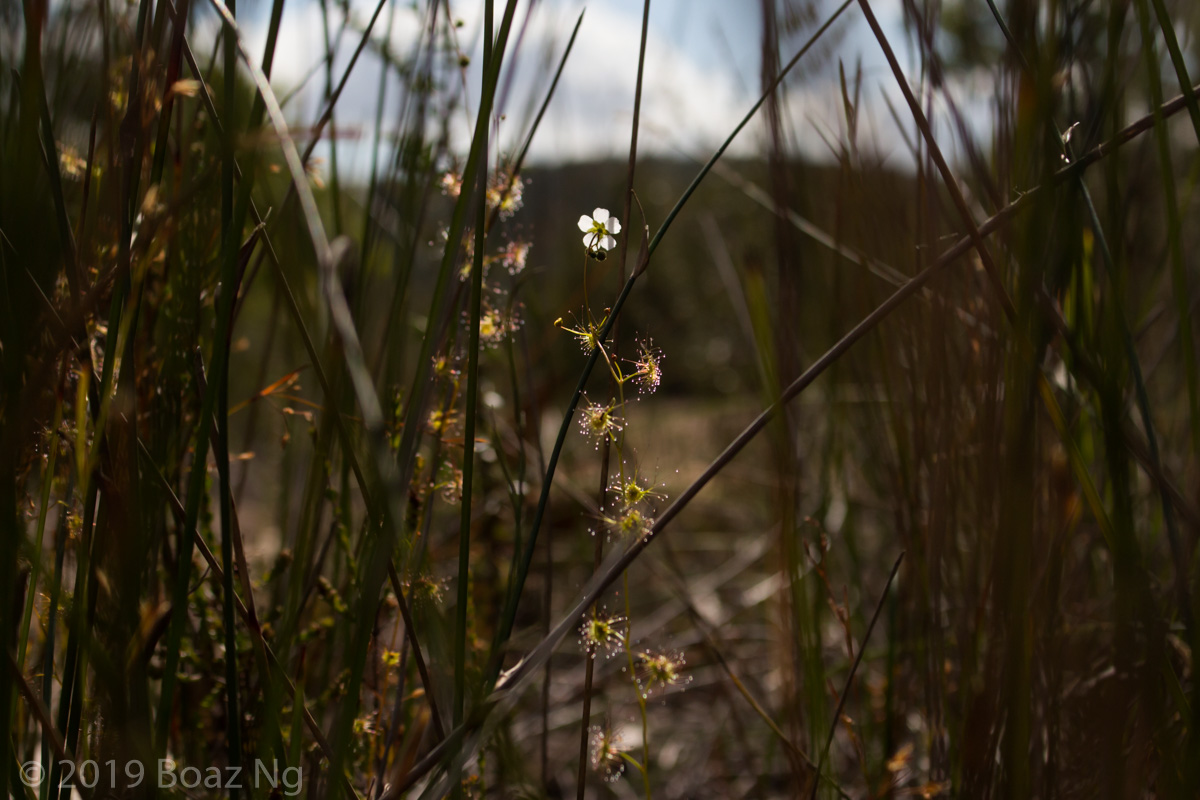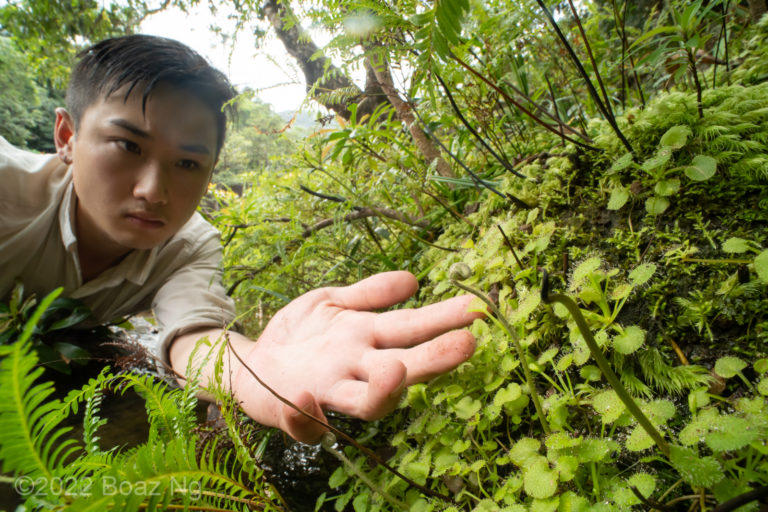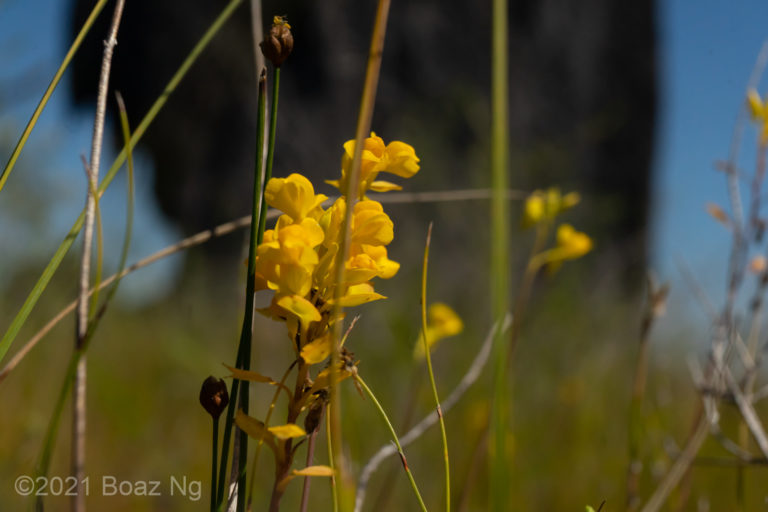Drosera peltata is an erect tuberous species native to the east coast of Australia. It is the type species of the convoluted and somewhat controversial species complex.
The D. peltata complex has been subject to various reviews, which define varying numbers of taxa according to each authors interpretation of what comprises a species. (For a good review, refer to the ICPS article). To summarise, Drosera auriculata and lunata are uncontroversially separated on the basis of their glabrous sepals. Drosera hookeri and gunniana likely form their own complex of plants with strong basal rosettes and bottle-shaped seeds. Drosera yilgarnensis is considered a Western Australian relative.
A contention lies in the distinction between Drosera peltata and gracilis. Drosera peltata was originally described from plants in the Sydney region by Thunberg in 1797. These plants are therefore Drosera peltata in the strict sense. Some authors consider that the type specimen for Drosera gracilis (from Arthur’s Lake in Tasmania) are identical to the Sydney plants and so consider Drosera gracilis to be a variety of Drosera peltata. Crucially, the type specimen of D. peltata does not include blooms or seed. My personal opinion is that the two taxa are distinct, based on sepal morphology and seed structure.
Drosera peltata grows in heathland on the east coast of Australia. It is common in the Sydney Basin and occurs down to far east Gippsland in Victoria. A basal rosette is mostly absent or reduced in flowering sized plants. The species has a slender stem and crescent shaped leaves, both usually coloured olive green to bronze in good light. The inflorescence is held with considerable distance between the last set of leaves. The flower buds are well spaced apart. The sepals are somewhat variable but are ovate-elliptical and hairy. The sepal hairs of the plants are thick and do not have glands at their tip. The seed is oval in shape, with a sharp point at one extremity and a very small lobed point at the other extremity. The plants are variable in height, growing from 10 cm to over 30 cm (excluding the inflorescence) and are usually self-supporting or lean on surrounding vegetation. The colour ranges from red to olive depending on the variety and seasonal conditions.
Drosera peltata is specifically distinguished from Drosera gracilis by the shape of the seed (those of D. peltata are rounded and ‘lemon’ shape whereas those of D. gracilis feature a long, tapering appendage at one extremity). The sepal hairs of D. peltata do not have a red gland at the tip whereas those of D. gracilis do. I have personally found that size or colouration is an unreliable way to tell the two taxa apart, with D. peltata strongly resembling D. gracilis when growing on shallow substrates such as moss atop sandstone.
Drosera peltata is distinguished from the Drosera hookeri/gunniana complex by the proportions of the plant (D. peltata has a proportionaly long inflorescence with widely spaced flower buds with mature plants usually lacking a basal rosette; D. hookeri is multibranched, short, has an inflorescence with crowded flower buds and a persistent basal rosette; D. gunniana is tall and has crowded flower buds and a persistent basal rosette). The seeds of the D. hookeri/gunniana complex also feature a prominent lobed appendage at the extremity, which is absent in D peltata.
D. peltata is distinguished from Drosera auriculata and D. lunata by its hairy sepals.
